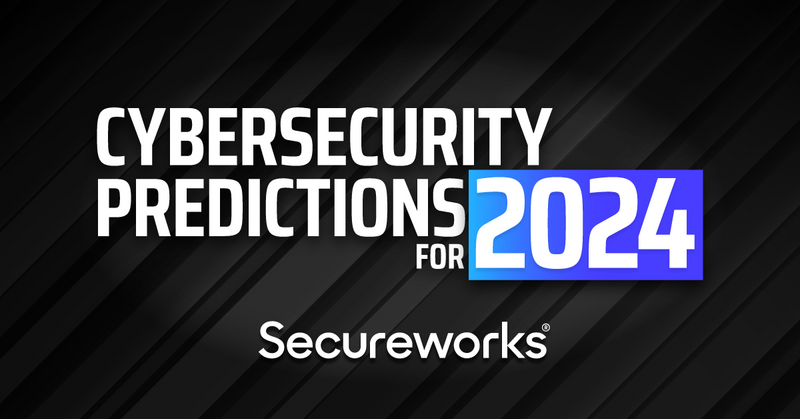Top Cybersecurity Forecasts for 2024: Keep Ahead of Emerging Risks
As we come close to 2024, the cybersecurity landscape is positioned for significant improvement, driven by arising risks that companies must not only expect but likewise purposefully address. The surge of AI-driven cyberattacks, coupled with progressively sophisticated ransomware strategies, highlights the urgent demand for advanced defenses. Furthermore, the growing variety of IoT gadgets offers new vulnerabilities that could be made use of. With regulative modifications coming up and a critical emphasis on cybersecurity training, it is necessary for organizations to reassess their methods to continue to be durable. How prepared are you to browse these progressing challenges?
Surge of AI-Driven Strikes
As organizations progressively embrace man-made knowledge innovations, the possibility for AI-driven assaults is becoming a critical problem in cybersecurity. Cybercriminals are leveraging AI to enhance the sophistication and effectiveness of their strikes, producing a landscape where typical safety and security measures might falter. These attacks can manipulate artificial intelligence algorithms to recognize susceptabilities in systems and networks, causing much more targeted and destructive violations.
AI can automate the reconnaissance phase of a strike, enabling adversaries to collect substantial amounts of information rapidly (cybersecurity and privacy advisory). This capability not just shortens the time needed to release a strike but also increases its precision, making it harder for protectors to prepare for and mitigate risks. Additionally, AI can be utilized to develop persuading phishing systems, generate deepfake web content, or control data, even more complicating the cybersecurity landscape
Organizations need to focus on the assimilation of AI-driven cybersecurity services to respond to these arising hazards. By employing advanced threat detection systems, companies can enhance their capacity to determine and neutralize AI-generated attacks in real time. Continuous financial investment in training and awareness programs is additionally essential, as it equips employees to identify and reply to possible AI-driven dangers successfully.
Raised Ransomware Refinement
The increase of AI-driven attacks is not the only trend reshaping the cybersecurity landscape; ransomware attacks have actually additionally evolved, coming to be increasingly innovative and targeted. As cybercriminals refine their methods, companies deal with increased dangers that need adaptive approaches to alleviate prospective damages.
Modern ransomware hazards now take advantage of advanced techniques, such as dual extortion, where aggressors not just secure data yet likewise threaten to leakage sensitive info if their demands are not satisfied. This adds an extra layer of stress on sufferers, frequently engaging them to pay ransoms to secure their track records and client trust fund.
In addition, the use of automated tools and equipment learning formulas by criminals has streamlined the assault procedure, enabling them to recognize susceptabilities much more efficiently and customize their methods versus specific targets. Such advancements have actually led to a worrying rise of assaults on crucial framework, health care systems, and supply chains, emphasizing the need for robust cybersecurity frameworks that prioritize real-time danger discovery and reaction.
To respond to these evolving risks, companies have to spend in thorough training, progressed protection technologies, and case action intends that integrate lessons found out from previous ransomware events, guaranteeing they continue to be one step in advance of progressively complicated assaults.
Growth of IoT Susceptabilities
With the fast development of the Net of Points (IoT), susceptabilities related to these interconnected tools have come to be a critical worry for companies and people alike. The expansion of clever gadgets, from home devices to commercial sensors, has actually produced an expansive assault surface for cybercriminals. Lots of IoT gadgets are deployed with minimal protection procedures, commonly using default passwords or out-of-date firmware, making them prone to exploitation.
As devices come to be interconnected, the potential for large-scale attacks boosts. As an example, jeopardized IoT gadgets can act as access factors for enemies to penetrate even more safe networks or launch Dispersed Rejection of Solution (DDoS) attacks. cybersecurity and privacy advisory. The absence of standardization in IoT safety gauges more intensifies these vulnerabilities, as differing makers apply varying levels of security
Furthermore, the boosting class of malware targeting IoT gadgets presents considerable risks. find out Risk actors are constantly developing new methods to manipulate these weak points, bring about possible information violations and unapproved access to sensitive details. As we relocate right into 2024, organizations must focus on IoT protection, carrying out robust measures to guard their networks and minimize the threats related to this rapidly growing landscape.
Governing Modifications Affecting Security

In 2024, we anticipate to see more rigid conformity demands for organizations, especially those that make or deploy IoT gadgets. The intro of policies such as the European Union's Cyber Durability Act and updates to existing structures like the NIST Cybersecurity Framework will certainly stress safety and security by layout. Organizations will be mandated to carry out durable safety and security procedures from the initial stages of item growth, guaranteeing a positive position versus prospective susceptabilities.
In addition, regulative bodies are most likely to enforce significant penalties for non-compliance, engaging services to focus on cybersecurity financial investments. This change will not only enhance the general safety stance of companies but will also promote a society of liability in protecting user data. As policies tighten, the onus my company will significantly drop on firms to show conformity and guard versus the ever-evolving hazards in the electronic landscape.
Focus on Cybersecurity Training
Organizations' dedication to cybersecurity training is coming to be progressively vital as hazards advance and strike vectors increase. With cybercriminals continually creating advanced methods, it is vital for workers whatsoever levels to understand the threats and identify their function in alleviating them. Comprehensive training programs gear up staff with the knowledge and abilities necessary to recognize potential risks, such as phishing attacks, social design methods, and malware.
Additionally, a culture of cybersecurity awareness cultivates alertness among employees, reducing the chance of human error, which remains a substantial susceptability in numerous companies. Routinely upgraded training modules that reflect the most recent dangers will make certain that personnel remain educated and capable of reacting efficiently.


In 2024, organizations will likely prioritize continuous education and learning and simulation workouts, making it possible for employees to practice their response to real-world scenarios. Partnership with cybersecurity professionals for customized training solutions may likewise come to be extra commonplace. Ultimately, buying worker training not just strengthens an organization's defense posture however likewise cultivates a positive technique to cybersecurity, enhancing the idea go right here that security is a common responsibility across the enterprise.
Verdict
In conclusion, the cybersecurity landscape in 2024 will certainly be formed by the surge of AI-driven assaults, increasingly sophisticated ransomware tactics, and the development of susceptabilities related to IoT gadgets. Governing changes will certainly require boosted compliance steps, emphasizing the significance of incorporating security by design. Additionally, a solid focus on extensive cybersecurity training will be important in cultivating an organizational culture resistant to emerging dangers. Aggressive adaptation to these fads will be important for reliable defense approaches.
 Anna Chlumsky Then & Now!
Anna Chlumsky Then & Now! Jonathan Lipnicki Then & Now!
Jonathan Lipnicki Then & Now! Kirk Cameron Then & Now!
Kirk Cameron Then & Now! Susan Dey Then & Now!
Susan Dey Then & Now! Sarah Michelle Gellar Then & Now!
Sarah Michelle Gellar Then & Now!